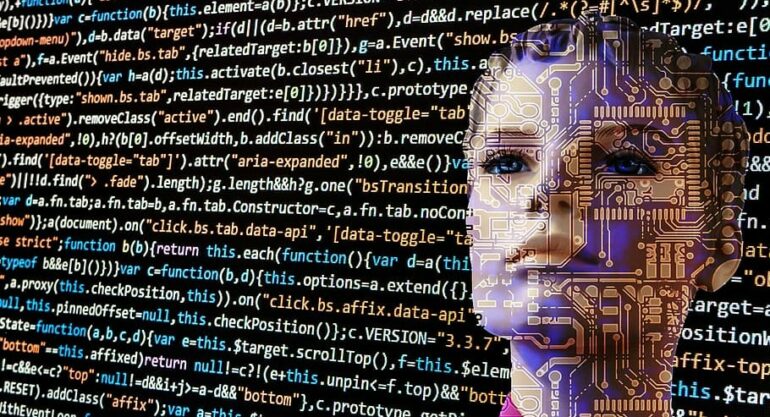The rapid ascent of artificial intelligence in recent years, exemplified by the skyrocketing popularity of generative AI chatbots like ChatGPT, has seen these technologies tackle an array of tasks that were once exclusively within the realm of human cognition. Yet, despite their increasingly proficient linguistic abilities, these machine learning systems surprisingly fall short when it comes to making the kind of cognitive leaps and logical deductions that an average teenager can accomplish with ease.
In this week’s excerpt from “A Brief History of Intelligence: Evolution, AI, and the Five Breakthroughs That Made Our Brains,” AI entrepreneur Max Bennett delves into the intriguing gap in computer competency by exploring the origins of the organic machinery that serves as the blueprint for AI: the human brain.
Bennett’s exploration focuses on the five pivotal “breakthroughs” that paved the way for the evolution of our modern minds. These breakthroughs, amidst a sea of genetic experiments and evolutionary dead ends, are the very foundations upon which our species has built its intellectual prowess. Remarkably, these advancements that took eons to shape the human mind can also be harnessed to guide the development of AI technologies in the future.
In the following excerpt, we delve into the workings of generative AI systems like GPT-3. These systems are constructed to mimic the predictive functions of the human neocortex, yet they grapple with the complexities of human speech.
GPT-3 embarks on a journey of word prediction, sentence anticipation, and paragraph comprehension. Throughout extensive training, it strives to forecast the next word in a continuous stream of text. With each prediction, the neural network’s weights are minutely adjusted towards the correct answer. Through countless repetitions, GPT-3 acquires the ability to predict the next word based on the preceding context. In essence, this mirrors a fundamental aspect of how human language operates. Think about how naturally you can anticipate the next word in familiar phrases:
- “One plus one equals _____”
- “Roses are red, violets are _____”
You’ve encountered such sentences countless times, and your neocortex effortlessly predicts the following word. What distinguishes GPT-3 is not its capacity to predict the next word in sequences it has seen extensively. That could be achieved through mere memorization. What’s truly impressive is that GPT-3 can handle novel sequences it has never encountered and still accurately forecast the next word. This mirrors an aspect of human language comprehension. Could you predict that the next word is “blue”? Most likely, even though you hadn’t seen that precise sentence before. The shared attribute here is prediction. Both GPT-3 and the neocortical regions responsible for language exhibit predictive abilities. They can extrapolate from past experiences, apply that knowledge to new sentences, and estimate what comes next.
However, when confronted with questions requiring simulation or reasoning, the differences between GPT-3 and the human brain become apparent. For instance:
- “If 3x + 1 = 3, then x equals _____”
With this question, you likely paused to perform some mental arithmetic before arriving at an answer. In contrast, GPT-3 provides an incorrect answer, reflecting its lack of understanding of even elementary aspects of mathematical principles.
- “I am in my windowless basement, and I look toward the sky, and I see _____”
In this case, GPT-3 envisions stars, while human cognition readily grasps that a basement ceiling would obscure such a view. The inadequacies of GPT-3’s responses highlight its lack of common sense.
These questions requiring simulation reveal a stark divergence between the human brain and GPT-3. Humans don’t acquire math knowledge or language comprehension in the manner GPT-3 does. Children, for instance, do not simply absorb sequences of words until they can predict what comes next. They learn language by associating symbols with aspects of their pre-existing inner simulation. This foundation isn’t rooted in sequence learning but rather in the connection of symbols to components of the child’s inner world.
Humans have the remarkable ability to validate mathematical operations through mental simulation. When you add one to three in your mind, you intuitively recognize that the result should be four. You don’t need to check this on your actual fingers; you can imagine the operation. This capability stems from the accuracy of our inner simulations, which faithfully replicate the rules and attributes of the physical world.
However, GPT-3, despite its vast knowledge, cannot engage in the same level of simulation. GPT-3 can provide correct answers to math questions it has seen before, but its understanding doesn’t extend to the deeper, intuitive comprehension humans possess. For example, the cognitive reflection test, designed to evaluate the ability to inhibit reflexive responses and engage in active thinking, presents questions where human cognition excels, whereas GPT-3 mirrors the common errors made by humans.
In essence, the human brain boasts both a language prediction system and an inner simulation. The evidence supporting this claim is derived from experiments that pit one system against the other. The neocortex not only predicts words but also has the capability to construct inner simulations. It is this combination that sets human language apart, as it doesn’t solely rely on syntax but also enables the rendering of shared inner simulations, fostering a deep level of understanding.
While GPT-3 can respond correctly to many mathematical questions, it lacks the capacity to simulate and reason in the same way humans do. The human brain doesn’t merely predict words; it actively engages in inner simulations, facilitating profound comprehension. This differentiation underscores the challenges AI faces in attaining human-like cognitive abilities.
The journey of AI development continues, and while it has made remarkable strides, the quest to bridge the gap in reasoning and simulation remains an intriguing challenge. The human mind, with its inner simulation capabilities, serves as a model and a reminder of the complex and multifaceted nature of human cognition.

